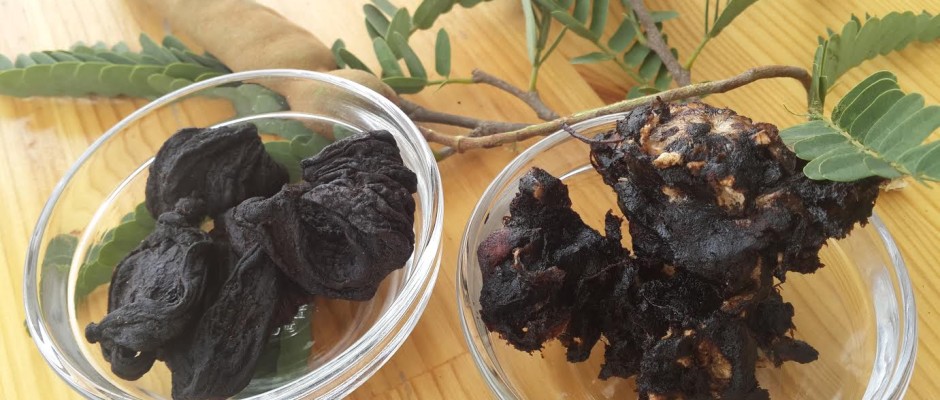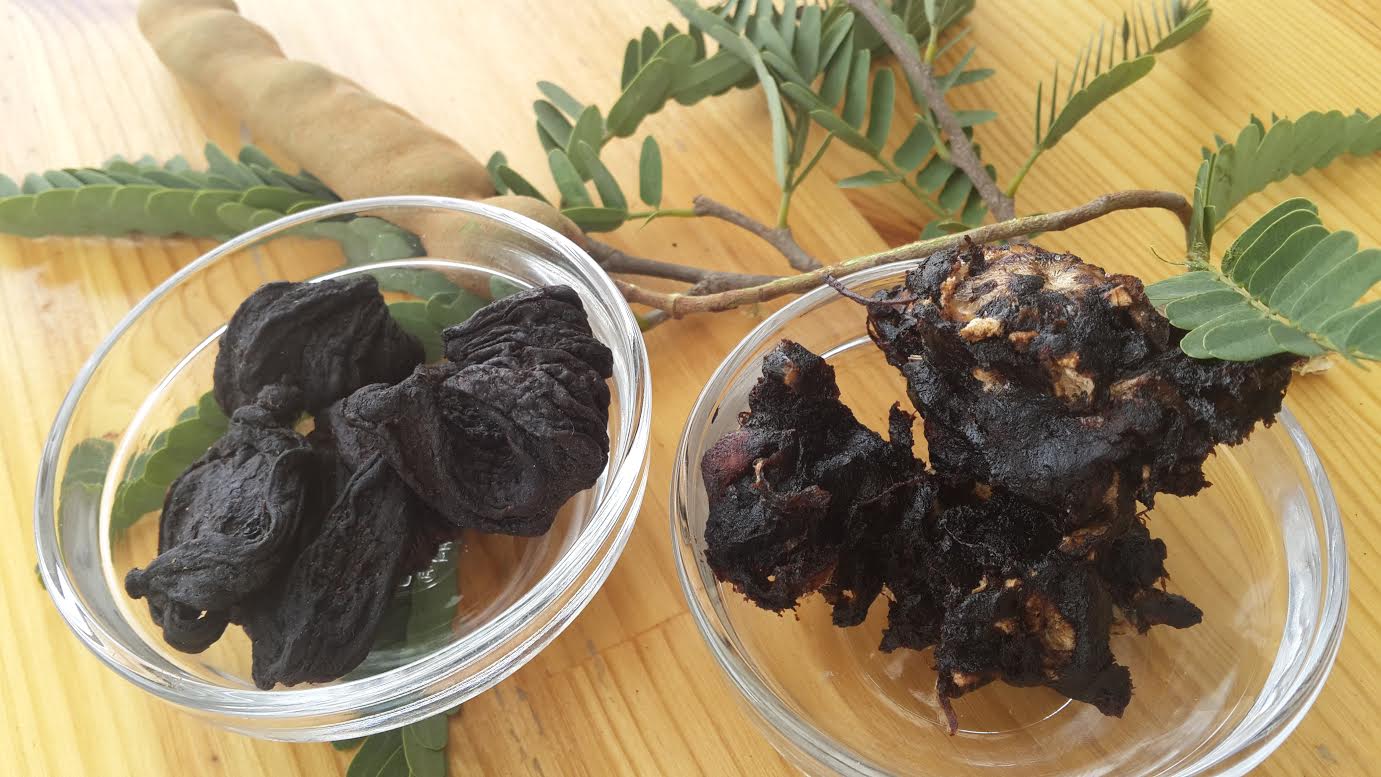Hindu metro plus , The Sour truth
Souring agents are a huge part of our culinary traditions. Depending on the state and community , the food that adds the “pullippu” note , varies. Tamarind , Kudampulli , Kachampulli , Kokum all add that much needed sour tang to a dish. It’s a taste that Indians accquire from childhood and grow to love. The street where I grew up was lined with Tamarind trees from end to end. It was a fairly common sight back then to watch passersby eagerly picking the ripe fruits that had fallen to the ground. The sweet tartness of the flesh makes it an irresistible treat to nibble on. This lip puckering ingredient is the quiet hero in most Indian dishes. The full bodied flavours of a traditional rasam and sambhar come through only after the addition of the dark pulpy tamarind extract. To reach its full flavor potential it needs to go through a special process. When the fruit is ripe , the pale brown skin turns brittle and is snapped open to take out the flesh. It then goes through the tasks of being sun dried and pounded. This helps to soften the fibres and make it easily dissolvable for cooking. Tamarind actually has its origins in Africa but has been a part of Indian cooking for so long that most people are unaware of that fact. This is an ingredient that the rest of the world is now waking up to. Paired with jaggery it offers that perfect balance in taste. Now , there are desserts that consist of the tamarind pulp in their ingredients. Many chefs abroad are now adding a bit of tamarind in their plum cake batter for that extra lift. Tamarind candy is a refreshing treat to suck on at the end of a meal. Jams and tapenades both sweet and savoury are introducing tamarind as an exciting taste blend. The fact that it keeps for a long time also adds to its many advantages. The older it gets ,the colour is almost a deep black and the flavor is more intense and rounded.
My friend Laju ,uses a lot of Kodampuli in her cooking. Her Kerala fish curry , spicy red curry and ‘meen peera’ is made more delicious by the zing brought on by the addition of this dried berry. Her aunt in Kerala processes it at home and sends it to her . It’s a very important ingredient in her larder. The fruit is like a large amla but with prominent sections. In its fresh form, It is known to possess medicinal properties and is the basis for a weight loss tonic. The English name is Brindleberry .To prepare for storage , Laju says it is taken apart in slivers , dried and then smoked. It’s at this point that the green fruit turns to a matt black and is ready for use. It needs to be soaked in warm water and torn apart before adding directly to the curry. She was generous enough to share some of her kudampulli stash with me ! I’m looking forward to using it in place of the tamarind ,the next time I make fish curry.
Kudampuli also grows in Coorg. They prepare it differently. It is abundantly available in the monsoon months which make storage a problem. Rather than just drying it , the fruit is left out in baskets until the pulp breaks down. A large vat is kept below to collect all the juices , the pulp is then removed. The juice at first is pale and golden. It is then heated in large clay pots until it turns the dark burgundy colour. This slow heating turns into an almost syrupy vinegar that improves with age. In fact the older brews are preferred over the newer ones, for cooking. In Kodava language the fruit is called ‘panapulli’ and the extract is the kachampuli. This is an important ingredient in the famous Coorg dish, pandi curry. The dark colour and the robustness of the dish is so mouthwatering and makes for an irresistible treat !
Kokum is related to the mangosteen family. The reddish outer covering of the fruit is sundried and used as a staple souring agent in Gujarathi , Goan and Manglorean cuisines. It is also used in Assamese cuisine to make ‘tenga dali’ or sour dal . Kokum sherbet is something we may all be a little more familiar with . It’s the perfect refresher for the summer months. Aagal is the same in concentrate form. It is added to coconut milk , the sweet and sour flavours make a delicious dish called solkadhi .
It never ceases to amaze me how vast the Indian cuisine is. The list is endless and the possibilities are many. It does’nt matter if one is a novice cook , recipe developer or a trained chef ,the ingredients in this cuisine leaves us spoilt for choice !



No comments yet.